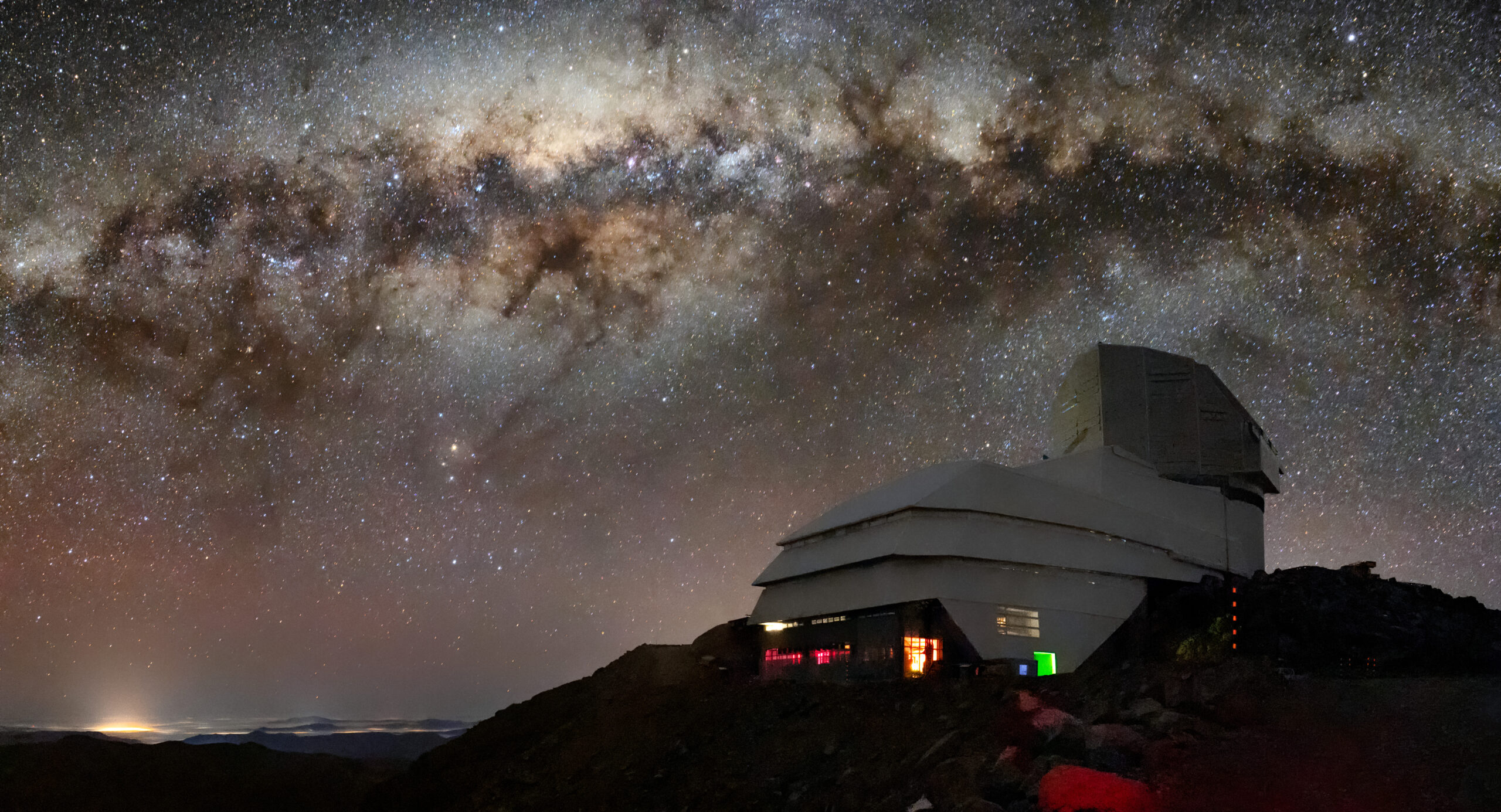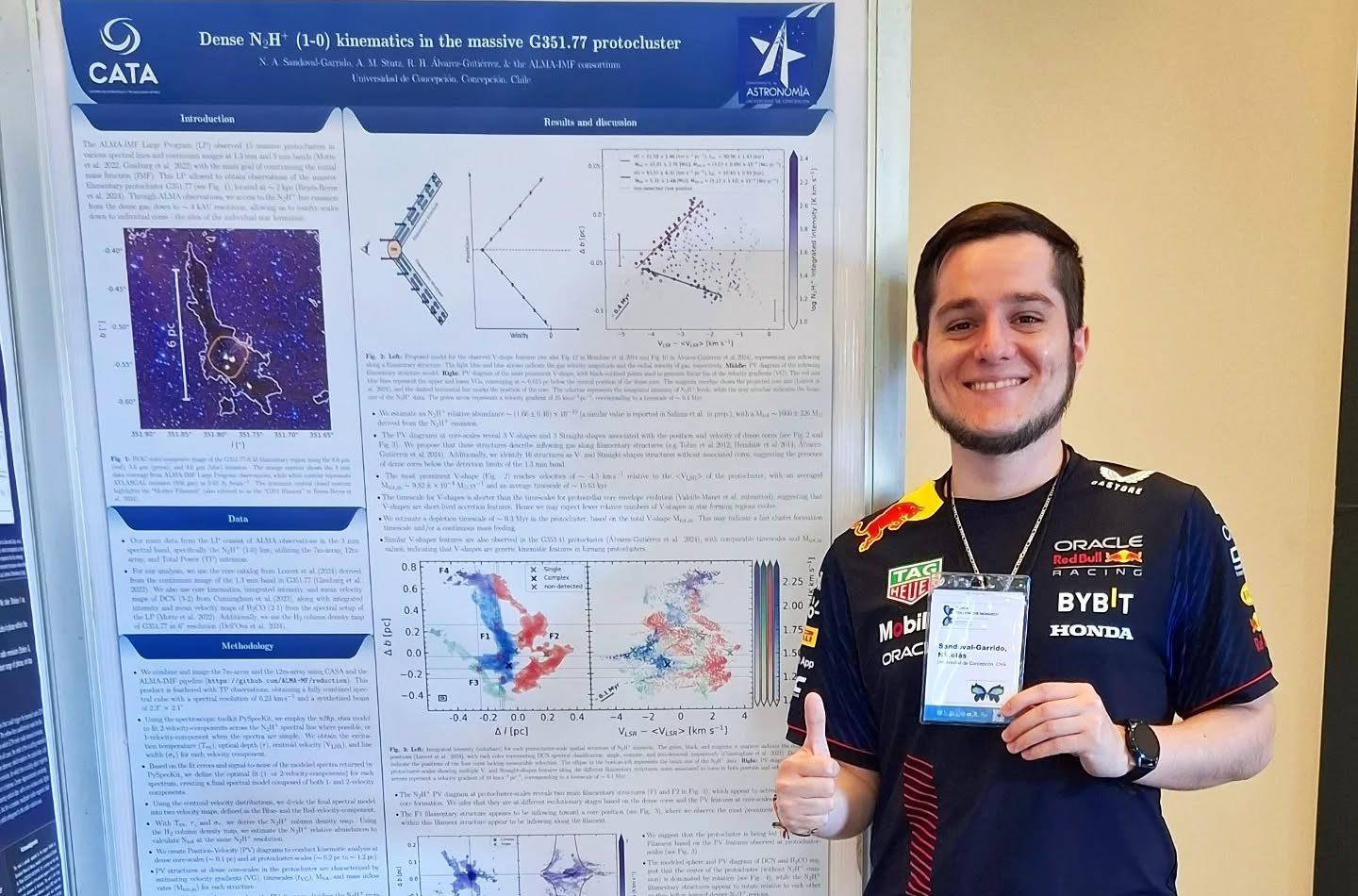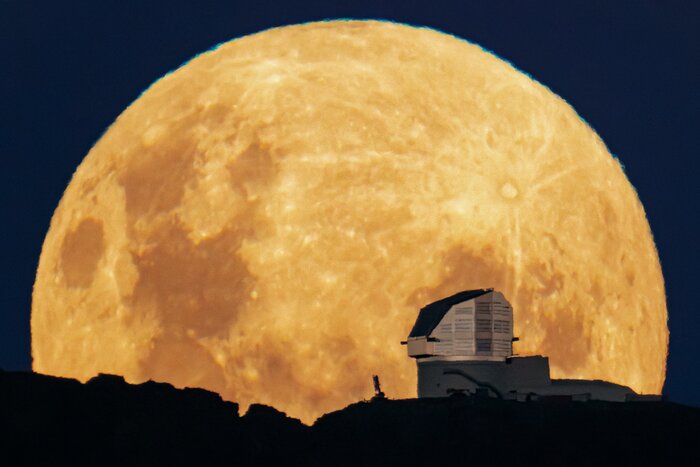
Young CATA astronomer creates a large survey of RR Lyrae stars in the bulge of the Milky Way galaxy
Julio Olivares' research, published in Astronomy & Astrophysics, allowed him to create a catalog of nearly 5,000 such stars and, in addition, he was able to determine that they rotate in the bulge more slowly than metal-rich red giant stars and have a lower velocity dispersion.
Within the exponential growth of astronomical studies, a series of catalogs are being created that provide alternatives for new studies. A relevant part of these may involve interlinking information from different surveys, and this is what Julio Olivares, CATA astronomer and PhD candidate in astrophysics at the Catholic University, whose thesis director is also CATA astronomer and associate researcher, Manuela Zoccali, did.
His objective was to derive a rotation curve for RR Lyrae stars in the Galactic bulge in order to determine that the old component traced by these stars is different from the two main components observed in the bulge.
To do so, he combined spectra from the APOGEE-2S survey with light curves from the OGLE-IV survey, near-infrared photometry, and proper motions from the VISTA (Variables in the Milky Way) survey for 4,193 RR Lyrae stars. Coordinates, velocities, proper motions and distances were used to calculate orbits within an updated galactic potential and thus isolate stars belonging to the bulge from those that are part of other components of the Galaxy.
This earned him a publication of his paper “Comparing bulge RR Lyrae stars with bulge giants” in the prestigious journal Astronomy & Astrophysics.
“We study the central part of the galaxy, which is the bulge, which is always a more complicated area to analyze, because there are so many stars and RR Lyrae allow us to calculate distances with a much higher precision than with any other type of star. They are a kind of very old tracers, more than 10 billion years old, compared to the Sun, which is 4.5 billion years old. From many previous studies we know that in the bulge of the Milky Way there is also a bar where many of the stars rotate. So, it is an interesting result that these stars are rotating, but that they are not following the shape of the bar itself”, explains Julio Olivares.
An interesting result is that, together with other astronomers, he created a new catalog of this type of stars for the bulge zone, expanding the surveys that totaled about 2,000 to almost 5,000.
“We are increasing the number of stars available to study. As each of them has different parameters, I analyzed their velocities and, in addition, we added their distance and metallicity. We started to create a dictionary that is growing over time and we hope that it will continue to advance because we are talking about the oldest stars in our galaxy and their knowledge contributes a lot to understanding the history of the Universe”, adds the CATA astronomer.
In the research process, and also for future studies, collaborative work has been fundamental. And in this sense, Julio Olivares is grateful for the help that belonging to CATA implied.
“The support ranges from the facilities used, resources and, of course, being linked to a relevant number of the most important astronomers and astrophysicists in the country, along with participating in congresses that are always an opportunity to learn. Most of the researchers with whom I work are also part of CATA and that facilitated the development of the project”, he explains.
The publication’s conclusions state that the stars that remain confined within the bulge account for 57% of the sample and that the RR Lyrae variables in the bulge rotate more slowly than the metal-rich red giant stars and have a lower velocity dispersion. Their kinematics are compatible with them being the low-metallicity tail of the metal-poor component. It is further confirmed that a rather large fraction of halo and thick disk RR Lyrae stars pass through the bulge within their orbits, which increases the velocity dispersion. Therefore, a proper orbital analysis is essential to isolate the true bulge variables. Finally, the RR Lyraes in the bulge appear to trace a spheroidal component, although the current data do not allow a firm conclusion about their spatial distribution.
“One of the most interesting results is that we have discovered many new stars of this type, because all the time we are observing the sky, seeing how stars vary in brightness. Thanks to the VVV survey we have discovered in the infrared a new catalog of many more stars of this type, but we don’t have the radial velocities yet, we are missing that kinematic part. It would be great to be able to ask for observing time to go and take spectra of these stars and thus enlarge this catalog of available stars in the bulge zone”, emphasizes Julio Olivares.
The CATA astronomer will present this study at the next version of the CEP/RRL conference to be held November 23-30 at Cadi Ayyad University in Morocco.
Recent news
-
 Publicado el: 30/06/2025CATA Director strengthens ties in her second institutional tour
Publicado el: 30/06/2025CATA Director strengthens ties in her second institutional tour -
 Publicado el: 26/06/2025Vera C. Rubin: the telescope that watches the sky and anticipates the future of astronomy
Publicado el: 26/06/2025Vera C. Rubin: the telescope that watches the sky and anticipates the future of astronomy -
 Publicado el: 25/06/2025CATA researchers appointed as Full Professors at Universidad Andrés Bello
Publicado el: 25/06/2025CATA researchers appointed as Full Professors at Universidad Andrés Bello -
 Publicado el: 25/06/2025Study by young Chilean astronomer reveals new key parameter for understanding star formation
Publicado el: 25/06/2025Study by young Chilean astronomer reveals new key parameter for understanding star formation -
 Publicado el: 19/06/2025Rubin: The Universe’s First “Movie” That Will Transform Astronomy
Publicado el: 19/06/2025Rubin: The Universe’s First “Movie” That Will Transform Astronomy
Categories list
- Acknowledgments 18
- Astrobiology 5
- AstroCluster 1
- Black holes 13
- Corporativo 49
- Cosmology 4
- Descubrimientos 19
- Disclosure 45
- Exoplanets 13
- Extension 4
- Galaxies 17
- Galaxies formation 2
- Inter y Transdisciplina 2
- Local Universe 13
- Publications 5
- Sin categorizar 31
- Solar System 11
- Stellar formation 6
- Technology 9
- Technology Transfer 12
